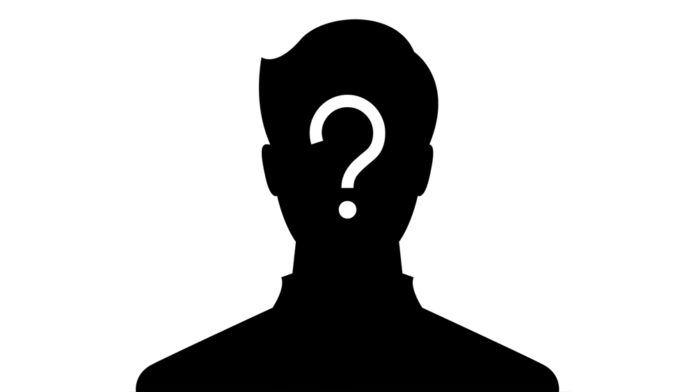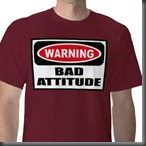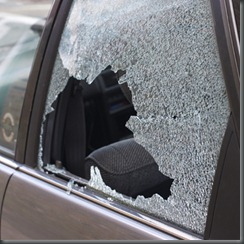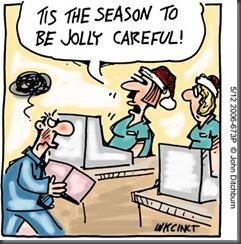Is it really a Cop pulling you over?
Nobody likes being pulled over by an officer for a traffic violation. If you’re lucky, it’s only a warning. If you’re not lucky, it’s a ticket. And lately for a few unlucky drivers, it’s been a terrorizing experience. That’s because the car that pulled them over wasn’t a police car at all. It was carjackers trying to impersonate police cars by using a powerful spotlight to pull cars over.
The drivers did exactly what they were supposed to do, pull over for what they thought was a police officer. Unfortunately, it was not a police officer at all; it was armed carjackers who ordered the drivers out of their cars at gunpoint. The carjackers stole the cars leaving the drivers standing at the side of the road wondering what had just happened. Luckily the carjackers just took the drivers cars and didn’t kidnap or shoot them. Luckily the drivers used common sense (or NetCops tips) and just gave up their cars without resistance. The drivers lost their cars but they were not injured or hurt.
Some of the cars were later recovered complete and others were stripped or found torched. Numerous carjackings occurred in this manner and the Media tried to spread the word to warn drivers about the recent crime spree. The crime spree ended when the carjackers tried to pull over another vehicle by using bright spotlights but they picked the wrong victim this time. The car they tried to pull over was actually an undercover Highway Patrol car with two officers that were assigned to work the carjacking cases.
After a vehicle pursuit the officers lost the car but were able to identify and later arrest the suspects. Even though these suspects were caught, it can still happen to you. There have been numerous incidents where a suspect used white or red lights to pull over unsuspecting victims, usually women who are driving alone in their cars. During the day it is fairly easy to see what type of car is pulling you over. At night, with bright lights blinding your mirrors, it is much more difficult to see who is behind you. But the bright lights shining into your car at night is for officer safety purposes. We want to see any furtive movements a driver might make when being pulled over. Lots of people hide weapons, drugs, alcohol etc when they are pulled over.
When I make a traffic stop on a vehicle at night, I activate the red and blue overhead lights as well as the white side spotlight or overhead spotlights. I want to see what the driver is doing as they pull over. I want to make sure they are not reaching for a loaded 9mm pistol to greet me with as I approach the car.
How do you know if it is really a police car pulling you over? Here’s a few tips:
First the obvious, a marked Police, Sheriff, or Highway Patrol unit. (We’ll call them all police units from this point on). Usually black and white or solid white (although colors can vary). Marked units have Police emblems on the doors and overhead red and blue lights. If it is a marked unit, that’s exactly what it means. Clearly marked with obvious emblems and overhead lights along with a siren. Easy to see in the daytime and fairly easy to identify at night. If it looks like Christmas in your mirror with all the red and blue lights flashing, it’s fairly safe to say it’s probably a police car.
Next are the traffic or “slicktop†units. These cars are commonly one solid color such as black or white and do not have any emblems or markings on them. These cars do not have obvious overhead lights either, hence the nickname “slicktopsâ€. These police cars are often used by patrol supervisors, traffic units, and some undercover units to avoid being immediately identified as a police car. They look like a regular car until the red lights come on. When these cars make a traffic stop, they can use a variety of lights.
Some have red and blue lights mounted on the dashboard or on a flip down visor. Some have red and blue lights in the front grill of the car. Some have just a red light in the windshield or a red spotlight on the driver’s doorpost. These cars usually also have a siren. When these cars pull you over you will see red lights or red and blue lights. Most police cars will not use the siren on a traffic stop unless the car does not pull over or if they get into a pursuit. If you do hear a loud siren along with seeing red lights, it’s probably safe to assume it is a police car.
Last there are the undercover cars. No lights, emblems, or markings. Mainly used by narcotics units or special details and they do not make traffic stops on cars unless absolutely necessary. Most of these undercover cars look like any other regular car on the road. The officers are usually in plain clothes and probably wont even look like an officer at all. The cars are used in undercover work and if they need to make a stop on a vehicle, they will have a marked patrol unit do it for them in most cases.
In California, the vehicle code states that in order for a police vehicle to make traffic stops, it must be equipped with at least one solid lit red light facing forward and a siren. Some police cars have more but that is the minimum requirements according to State law.
That explains the three types of police vehicles usually sharing the roads with you. Now some tips on what to do when you see the lights come on behind you.
First, it would be extremely rare for an officer to make a traffic stop using only a white light although it could happen in an extreme or unusual situation. I’m not going to say it can’t happen, but If you see just a bright white light being flashed at you with no red or blue lights, I’d be very cautious about pulling over.
If you see the obvious red and blue lights and know it’s a police car, pull to the right curb SAFELY and stop. If it is you the officer wanted to pull over then he’ll pull over with you. If it’s not you he wanted then he will pass you by. It’s common for people to slam on their brakes and stop in the middle of the road when they see a police car with flashing lights behind them. Or they continue driving slowly thinking, “that can’t be for meâ€. Whether or not you think it’s you being pulled over, pull to the right safely and stop. This also applies if an ambulance or fire truck approaches you with flashing red lights.
If you are uncomfortable or not sure it is a police car pulling you over, there are some things you can do. Turn on your emergency flashers and drive SLOWLY to a shopping center, gas station, somewhere there is lighting and other people. I say slowly because if you suddenly take off fast and try to get away the officer will notify his dispatch that he is in pursuit of you. Then you will see more red and blue lights than on a Christmas tree. Lots of police cars will appear and when you finally stop, they will probably point guns at you until they find out why you fled.
Remember, the officer might be pulling you over for just a broken taillight but if you take off, thoughts of stolen vehicles, robbery suspects or worse go through the officer’s minds. We don’t know why you might be fleeing but we assume the worst. Driving SLOWLY to a well-lit area can help keep the officers from thinking you are trying to get away. Remember though, only do this if you have doubts that the car trying to pull you over is not really a police car.
Keep your doors locked and the windows up if unsure. When the officer approaches you can see if he is in uniform. When you know it is an officer, you can roll the window down. Our book CopTalk covers what to do during a traffic stop to make the stop go smoothly (and even gives some tips to possibly get a warning rather than a citation).
This article is to help you understand what to look for if you get pulled over. During the day it should be obvious if it is a police car pulling you over. These tips are mainly for nighttime situations when it could be difficult to see who is behind you. Again, most times you see red lights or red and blue lights it’s the real thing. If you don’t pull over right away and you hear a siren, better pull over, it’s probably real. But I’d be leery about pulling over for just a bright white light.
Take a drive by your local Police dept, Sheriff’s dept or Highway Patrol station if you don’t know what their patrol cars look like. That way you’ll have a better idea who might be pulling you over if it happens.
The NetCops staff







